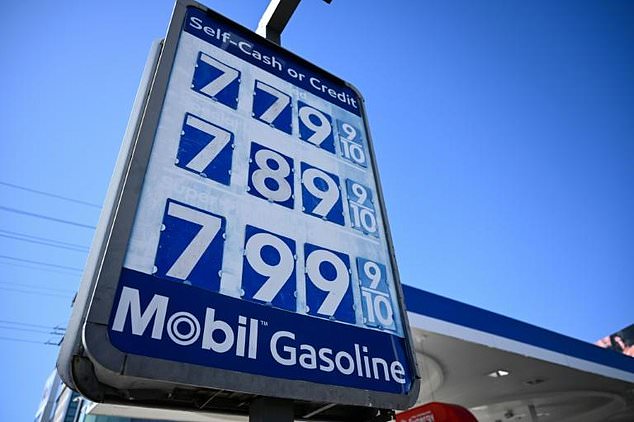US consumer inflation holds steady in September

A rise in the gasoline index was a major contributor to consumer inflation, said the Labor Department
Consumer inflation held steady in the United States last month, according to government data released Thursday, giving policymakers some reprieve in their battle to tamp down price increases.
The consumer price index (CPI), a closely watched inflation gauge, rose 3.7 percent from a year ago, the same rate as in August, the Labor Department said.
But on a month-to-month basis, inflation slowed from 0.6 percent to 0.4 percent, according to the latest report.
In addition, underlying gains were muted. The index with volatile food and energy segments stripped out cooled to 4.1 percent -- the lowest in two years.
The numbers could bring some relief to President Joe Biden, who has been struggling to combat gloomy sentiment on his handling of the economy as he campaigns for reelection.
"Overall inflation is down by 60 percent from its peak," Biden said in a statement Thursday, adding that unemployment has remained relatively low in recent months.
"That's Bidenomics in action," he added, referring to his economic agenda.
Slowing inflation will also be good news for the Federal Reserve, which has waged an aggressive campaign of interest rate hikes since March last year to lower demand and in turn, the pace of rising costs.
Although Fed policymakers have left the door open to another rise in the benchmark lending rate this year, lower inflation figures could reduce the need for one when their next meeting wraps up in November.
The Labor Department said that apart from shelter costs, an increase in gasoline prices were a "major contributor" to the September figure.
"While the major energy component indexes were mixed in September, the energy index rose 1.5 percent over the month," the department noted.
- Fed focus -
Despite headline inflation being slightly higher than analysts expected, the energy bump is "not necessarily something that will be of key importance for the Fed at this juncture," EY chief economist Gregory Daco told AFP.
"If you look forward to October, the decline in gasoline prices is actually going to weigh quite significantly on the headline CPI print," he added.
Meanwhile, with core inflation at 4.1 percent, the United States is "heading back to the period before which inflation started to really ramp up aggressively," Daco said.
The month-on-month figure for core inflation remained at 0.3 percent, but economists have noted that this does not mean the downward trend is stalling.
"The forces which drove up core inflation -- excess demand, the supply chain crunch, rapid wage growth, Covid-driven chaos in the rental property market, and soaring food and energy prices -- continue to abate," said Pantheon Macroeconomics in a recent report.
Some analysts believe that the data indicate policymakers will not hike interest rates at the next Fed meeting.
But Julia Pollak, chief economist at jobs platform ZipRecruiter, cautioned the central bank will likely want to see at least six months of lower inflation before "declaring victory."
In the meantime, higher borrowing costs will weigh on households, particularly those with credit card debt, and on businesses, she added.
"If rates stay higher for longer, as the Fed has signaled, that will likely drag down consumer spending and business spending -- including on hiring," she said.
Analysts are also keeping an eye on potentially widening unrest in the crude-rich Middle East, after militant group Hamas launched a surprise attack on Israel over the weekend.







































































































































































